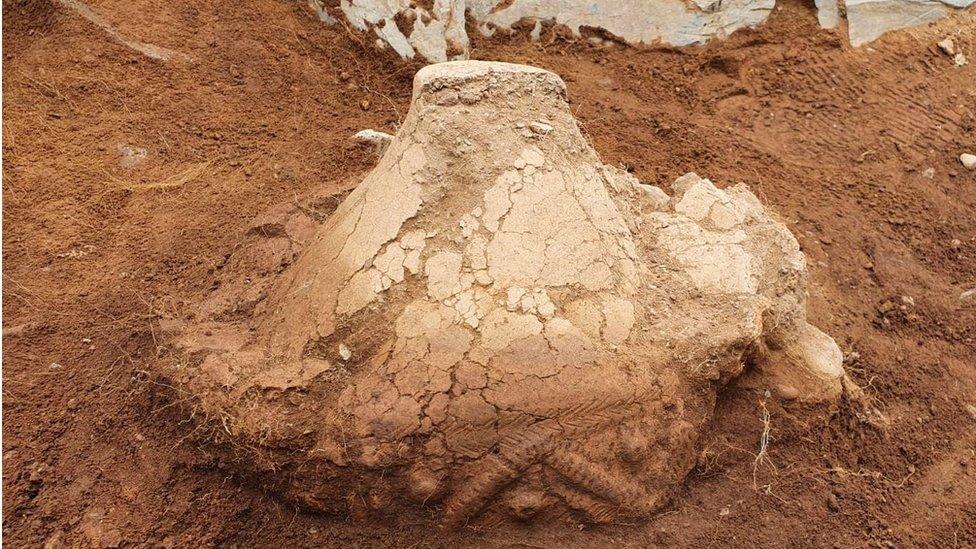Project focuses on Isle of Man maternal health 1,000 years ago
- Published
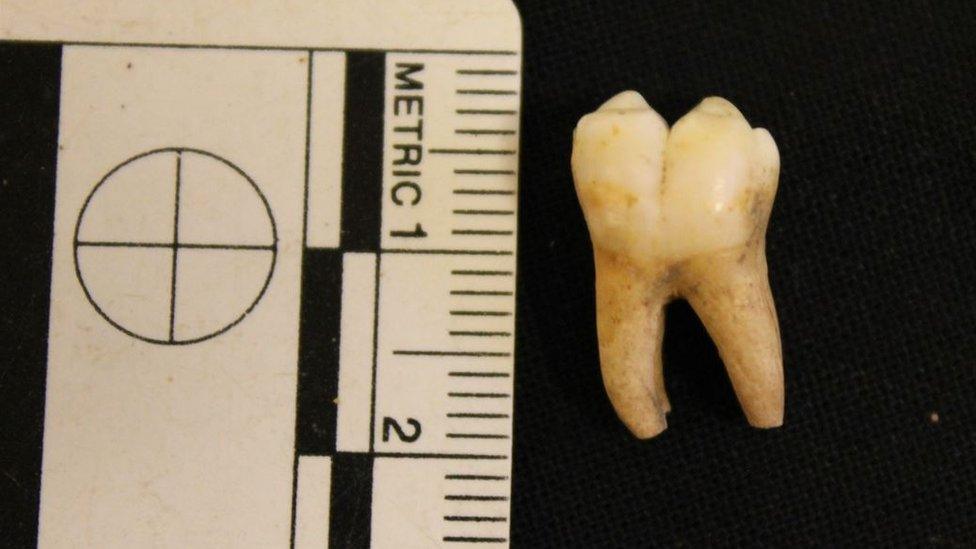
One tooth from each 16 individuals will be considered for the research
New research focusing on maternal health in history is set to reveal more about the lives of people on the Isle of Man more than a 1,000 years ago.
Osteologist Marie Weale, who is a research associate with Manx National Heritage (MNH), is set to use analysis of teeth to track vitamin D deficiency.
The human remains are held within the collections at the Manx Museum.
Curator of archaeology Allison Fox said the project was "about trying to get to know the people a little bit more".
Funded by Culture Vannin and supported by MNH, the project involves analysing the layers within teeth from child burials, including the dentine and formation of the layers of enamel.
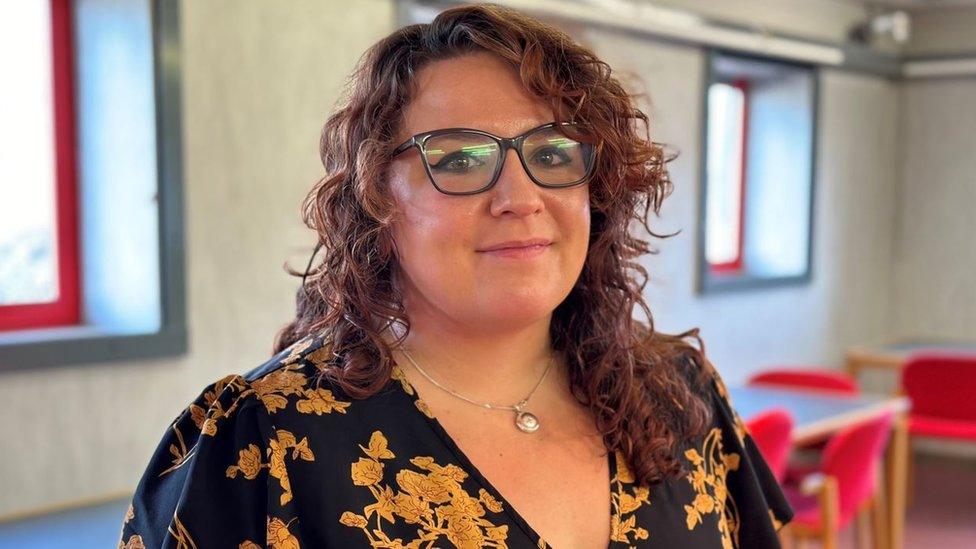
Marie Weale has carried out similar research on human remains excavated in England
Dr Weale said: "If you want to look at maternal infant health you need to use the first permanent molar, because that actually begins to form about 30 weeks in utero and finishes at the age of about 10."
She said that "holds a record of the first 10 years of life", which allowed researchers to look at the most at risk periods of childhood.
The research is being carried out in collaboration with Chris Aris at the University of Keele after the pair previously conducted a similar study focusing on people "from the Roman period all the way up to the industrial period in England" in conjunction with the University of Bradford, she said.
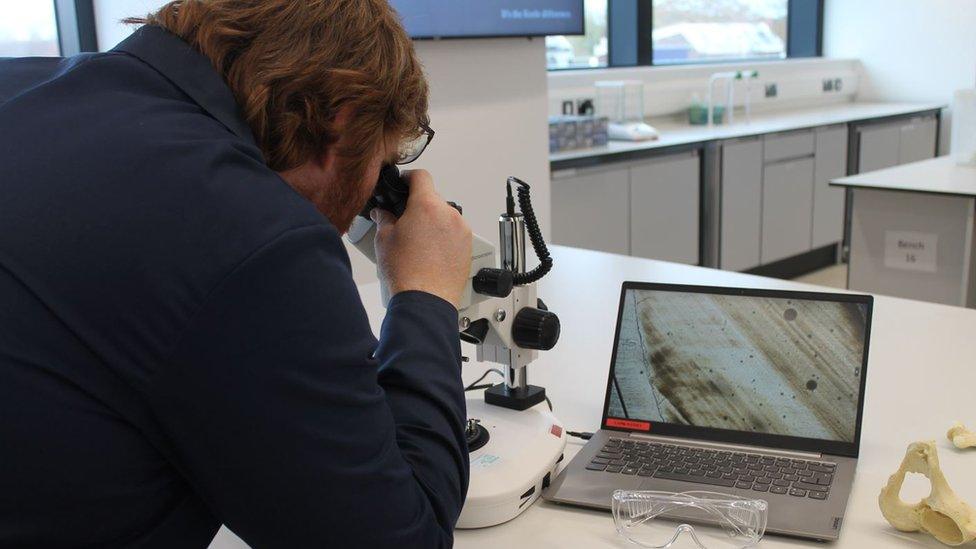
The project involves analysing the dentine and enamel in teeth
The 12-month project will consider 16 teeth from burials excavated from four sites on the island - Rushen Abbey and Balladoole in the south, and Peel Castle and Cronk Keeillane in the west.
Whereas previous lab methods for carrying out the analysis had involved the destruction of a whole tooth, Dr Weale has developed a new technique which only uses half of the tooth, preserving the rest for future research.
But there is still a chance not all of the teeth selected will be suitable for the technique, and each will first be micro CT scanned to check its suitability.
"That is a method that lets you build a 3D model of the tooth where you can see all the internal structures up to a certain level, and if at that point we see that there is no deficiency, or that there's too much damage within the tooth, then they wouldn't be sampled," Dr Weale explained.
"I am very much of the view that if we cannot guarantee having results, then we shouldn't sample."
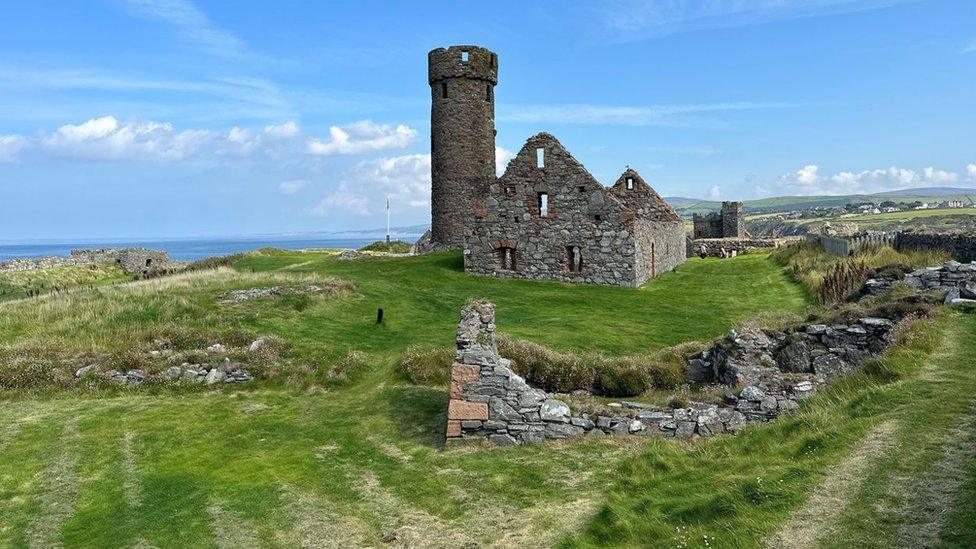
Archaeological excavations took place at Peel Castle in the 1980s
As part of the project independent researcher Sarah Kerruish will also work to build up a fuller picture of the sites the human remains came from, particularly focusing on Cronk Keeillane and Balladoole, which have been subject to less modern study than the other two burial sites.
Collectively the dates of the sites stretch from about AD600 to AD1,000 during the medieval period and, despite the period covering the Viking Age on the island, all of the burials being considered were Christian.
Ms Kerruish said overall the project demonstrated the "power and the potential archaeology in all its different formats has to reinterpret people" who were not in the history record.
"They've got just as valid and interesting lives as the people with the big swords and the big ships and everything else, but without work like this we don't know about them," she said.
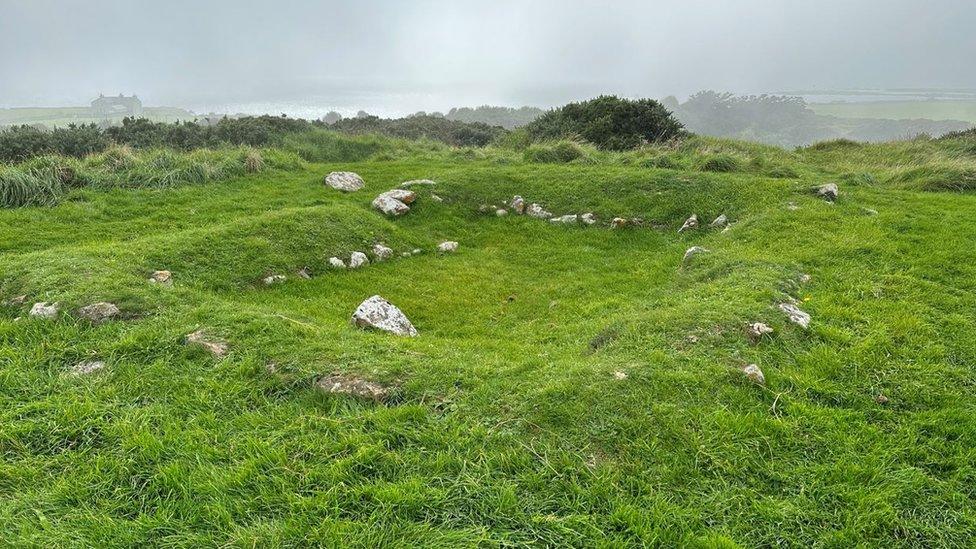
Remains from Balladoole feature in the project
And that was something echoed by Ms Fox: "That's why the collections are kept, to tell people more about who people were in the past, not just where they lived, what the buildings looked like, actually how they lived and what they suffered from.
"So to give a rounded story of the people who lived here 1,000 years ago, it's important to have projects like this.
"It's a very human story. "

Why not follow BBC Isle of Man on Facebook, external and X, external? You can also send story ideas to IsleofMan@bbc.co.uk
Related topics
- Published19 July 2022
